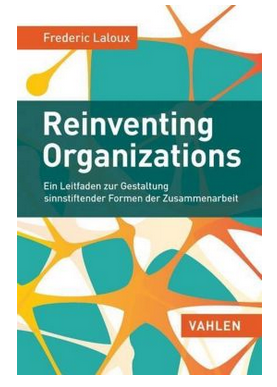Ingo Kallenbach
Reinventing organisations by Frederic Laloux (2014)
A good book. A big book. A revolutionary book. The reviews are outdoing each other. One thing is for sure: The author Laloux has succeeded in writing a fantastic book about the future organisation. Laloux? To be honest, his name was completely unfamiliar to us until then. He is Belgian with a McKinsey background and works as consultant and coach.

Four reasons that make the book “Reinventing organisations“, which is now available in German as well, fabulous:
- - It is based on a comprehensible scientific background. The questionnaire is included in the appendix of the book.
- - The book is clearly structured. Part 1 offers a historic overview of the evolution of organisations. These are marked by colours: from magenta up to teal (the organization type introduced here). Some might be reminded now of Graves’ “spiral dynamics“ and the approaches of the “integral theory“ by Ken Wilber, who appropriately enough also wrote the foreword.
In part 2 Laloux describes in detail the main characteristics of “teal“ organisations: wholeness, self-management and evolutionary purpose as well as their practical use by means of examples. How are these features being lived with relation to management and leadership, decision-finding, purchasing, HR processes etc.?
Part 3 finally describes which conditions are helpful for the setup and the development of “teal“ organisations. - - Helpful and clear illustrations in the appendix, showing how and in which fields “orange“ organisations (the currently still prevailing organisation type) can be transformed into “teal“ organisations. It is divided according to structures, processes and other dimensions of the so-called practical organisation life.
- - The variability in the approach: It does not presume to originate from one single possible approach, but rather highlights positive aspects in diverse organisation types, while at the same time giving ideas and impulses, which organisation types could be the most suitable under which conditions. However, the message is clear: Teal is the colour of the future. For “teal“ organisations different types of organisations are definded depending on the size and complexity of their value-added chain. This starts with parallel teams up to nested teams with long and deep value-added chains such as e.g. in the pharmaceutical or automobile industry.
By the way: All visual types can find a nicely made video here which offers an excellent overview of the approach in barely 10 minutes.

